This took a while. 2 years, to be exact. After release of the 4-voice polyphonic minilogue (that stepping stone to a pro’s synth) we would have expected its bigger brother to arrive soon. But Korg set up another test balloon at first: its monologue. A much-respected monophonic analog synth, available in various colors.
The success of both instruments might have asured Korg of being on the right path. And so the super-synth has now finally arrived: the prologue. A professional Japanese polyphonic synthesizer with 4 octaves / 8 analog voices (prologue-8) or, alternatively, 5 octaves / 16 analog voices (prologue-16). Great sounds.
Well … whether a 8-/16-voice analog synthesizer built in 2018 is destined to write synth history or not – who knows. In any case, the prologue has come to occupy a niche in our studio setup. To make it more precise: the instrument’s polyphony is not its unique selling point, but rather its voice architecture. Its quality of sounds.
Trademark: Made In JAPAN
For a long time, “Made In JAPAN” was synonym for highest quality when it came to electronic gear. However, a number of scandals with several Japanese industrial companies have seriously shaken that image in recent years.
According to the Made-in-Country Index, Japan ranked 8th in 2017, but was – alongside Canada – the nation most rapidly catching up again.
[See: Article on the most popular indications of origin, from: welt.de/wirtschaft]
Korg and its prologue are high quality. “Made in JAPAN” is – with good reason – an trademark to be emphasized. Solid chassis, extremely solid, high-quality pots, switches and buttons, attractive wooden side panels, internal power supply: Prologue hardware speaks for itself. Big thumbs-up!
Pitchbend / ModWheel might be slightly oddly placed (above the keyboard! Some people like it, some don’t), but they are a significant improvement over minilogue / monologue. Remember that noisy slider with its center spring? Click – click! That annoying mechanical noise (!) each time you moved the slider? What a blessing to have “real” wheels on the prologue. And they are programmable, too …!
The high quality keyboard – tastefully weighted and thus a pleasure to play – is another real improvement over monologue/minilogue. Ok, ok … a Fatar TP8 / S keyboard would have been even better, but let’s not complain: The prologue keyboard feels great.
All in all, Korg prologue hardware fulfills all criteria of a reputable professional synthesizer. “Made in JAPAN” is still a guarantee for high endurance, functionality and uncompromising quality.
But we can’t avoid asking a few small questions:
Why are imprinted potentiometer scalings missing? These “optical rasterizations” (usually 10 levels with fine subdivisions, like on a measuring tape) are a given with most synthesizers / audio devices / technical instruments. Such printed scalings might have given the prologue an even more professional look and would have made sound-programming a tiny bit more effective.
Fingerprints and dust particles show up all too well on the fine metal surfcae, letting the prologue look old before its time. A dust cover is highly recommended! Cleaning the prologue with a microfibre cloth is certainly possible, but requires a lot of energy, since fingerprints are really stubborn and hard to remove from the surface. So visual maintaining of the instrument requires a bit more work than necessary.
Finally, access to the rear side connections is a bit difficult. Although all in/outputs are labeled on the chassis’ upper edge – which is without a doubt very helpful – you simply can’t see the jacks when bending over the prologue. This has to do with the futuristic look of the chassis, stylishly curved inwards.
Sure, lifting the prologue does solve all (visual) problems, but it does not quite make sense to have to raise the synthesizer each time you wanna establish a connection from the prologue to, let’s say, a monotribe or volca beats (sync in <> out).
Let’s be honest: A these problems are no problems. Lack of imprinted scalings, laborious cleaning procedures, slightly difficult rear-side access … who cares! Those are just peanuts compared to the big plusses of the instrument’s high-quality hardware.
After all, considering other companies’ Toys’R’Us-synth-manufacturing-policies, Korg’s effort to build high-quality (pro’s) instruments can’t be rated high enough.
Welcome to the big show
“The prologue is a keyboardist-oriented analog synthesizer featuring the best of
Korg’s expertise.” (prologue user manual, page 3)
The prologue is indeed a professional synthesizer in many ways, not only in terms of hardware, but also in terms of sound architecture and … SOUND!
The prologue features:
- 8 / 16 analog voices
- Each voice includes a MULTI ENGINE providing a noise generator, a VPM oscillator, and the possibility to load user programmed oscillators (via SKD)
- Duo-timbrality with split / layer / crossfade function
- Various voice modes: polyphonic / monophonic / unison / chord
- Two digital effect sections with analog (hardware) access
- Analog compressor (prologue-16 only) for extra bass boost
- Arpeggiator with various play modes
- 500 immediately available sounds
- Comprehensive connections
Let’s start with the last. The connections are clearly divided in two zones. Power supply and control sockets on one side, audio connections – in a respectful distance to the power supply – on the other side.
Excellent: Sync In / Out for quick synchronization of prologue and other gear (Korg instruments, but bascially all trigger-modules, such as analog drum computers, step sequencers, LFOs, etc.). The expression pedal is programmable! And there are two MIDI busses (USB and MIDI IN/OUT, sadly no THRU).
Internal memory commands 500 sounds. That’s definitely more than enough. 250 factory presets and 250 (blank) INIT sounds. The factory presets are brilliant. However, those high-quality presets won’t surprise you after you’ve looked at the list of sound programmers (User Manual). The 250 factory sounds are from Francis Preve, Henning Verlage, Ian Bradshaw, James Sajeva & Nick Kwas, John Bowen, Kazuto Okawa, Luke Edwards, Tim Mantle and … well … KORG Inc. themselves.
The arpeggiator is very useful, the options speak for themselves. “Manual” mode breaks down the exact order of their input. “Poly Random” creates random patterns with two (!) independent notes. It goes without saying that velocity can be immediately implemented into the Arpeggio line. If you emphasize a single note (more or less), it also appears louder (or softer) in the arpeggio pattern.
Next, the different voice modes, whereby the VOICE DEPTH MODE controller plays a decisive role. This adjusts the way you hear the sub-oscillators and how many there are (monophonic mode), how strong the spread of individual voices is (Unison Mode), and which chords are played (Chord Mode).
Spreading the voices in the stereo panorama is also possible (VOICE SPREAD), which in turn is reminiscent of the magnificent soundscapes of the recently presented Oberheim OB-8. A musically wonderful feature..
And now to the actual core of the prologue – its voice architecture. Let’s start with the oscillators. While the oscillator’s classic part (VCO 1 / VCO 2) does not need much explanation (here, OSC Sync uses ring modulation, cross-modulation, all that the heart desires), the MULTI ENGINE – developed specially for the prologue – is the spectacular essence of this instrument.
Depending on your musical needs, the MULTI ENGINE – nomen est omen – delivers one of 3 sound sources. Noise is still the simplest application. Nothing to be set there. Noise is just noise. Activation, and off you go … well … we thought so, but we were definitely wrong. Here’s the truth:
“The Prologue noise module is divided into several modes: high, low, peak and decim. A whole “noise universe” opens up here, it goes far beyond ordinary noise and is one of my favorite prologue applications.” (Burb)
VPM Oscillator: Variable Phase Modulation. This engine is – we quote Korg – built with a carrier and a modulator. Granted, the meaning of this still eludes us. The circuit diagram is something for student technicians! And the description of each oscillator type reads like the directions for a missile system.
The following 16 (VPM) oscillator types are available:
- Sin1: Modulated sine wave carrier basic type.
- Sin2: Sine wave carrier and a modulator with self-feedback
- Sin3: Sine wave carrier with modulator 3 harmonics higher
- Sin4: Sine wave carrier with modulator 5 harmonics higher
- Saw1: Modulated sawtooth carrier basic type
- Saw2: Sine carrier based pseudo-sawtooth type
- Squ1: Modulated square wave carrier basic type
- Squ2: Sine carrier based pseudo-square wave type
- Fat1: Second subharmonic modulator with self-feedback and driven carrier output
- Fat2: Half subharmonic modulator with self-feedback and driven carrier output
- Air1: Noise modulated sine wave carrier
- Air2: Sine wave carrier modulated by both noise and a sine wave
- Decay1: Type with decaying modulation amount
- Decay2: Type with strong decaying modulation amount
- Creep, Throat: Experimental type with complex and evolving modulations
One thing is certain: Some waveforms sound quite ordinary (sinus, etc.), but others are enormously experimental.
Finally, USER (USR) is a completely self-contained oscillator engine that can be loaded into the prologue. Here too, up to 16 (own) oscillator programs – user oscillators – can be accessed. Although the factory version, however, has only a standard user oscillator.
The implementation of “user” oscillators (as well as “user” effects) should be done with the Software Development Kit (SDK), which Korg offers for download on its website. Working with SDK requires a firmware upgrade which is scheduled to come out in July 2018.
The further sound path of the prologue – mixer, filter, amplifier – can be more or less skipped. There is nothing new here.
However, we would have preferred a small adjustment (we’re just dreaming, of course). The arrangement of the envelopes should be – in our opinion – reversed. The top ADSR for the filter, the lower for the AMP. Here it’s the other way around.
The LFO can operate in 3 speed areas (FAST / SLOW / BPM). Simultaneously pressing SHIFT and turning the INT(ensity) knob will invert the selected waveform. This is just one of many examples of how many useful little details the prologue has been provided with. Details also discussed in the excellently user manual.
Finally, the effect section is another special tool to give a finishing touch to the sound as a whole. Thanks to the (analog) operation, adjusting the effects is a question of seconds.
The compressor – only to be found in the big prologue 16, by the way – is not only a nice addition, but an important tool to optimize the sound. This is because the prologue basically sounds in the base range soewhat thin, the emphasize in the middle. At this point, the compressor compensates for what the sound generator has misses. Prologue 8 users will probably have to do this work-step externally to improve the low audio frequencies.
Sound: prologue in action
Granted, thaat’s one boring headline. But the content is the essence, as we say. And here we come to the core of the report, to some very important, fundamental considerations concerning the Korg prologue.
The thing is: 8 analog voices sounds like a pretty decent setup. And 16 analog voices “sounds” even better.
Now, voice and sound are two different things. Only a fool would sell his aged Roland Juno-60 to make place for the prologue 16. Yes, he got rid of awkward MIDI implementations with this sale. But je has lost Juno’s warm, earthy sound as well. Any attempt to replace a polyphonic analog synthesizer from before 1985 with the prologue is doomed to fail.
Warm pads and organic (living) sounds are not the great strengths of a prologue. Its sound character is modern. Diverse and yet rather cool. But if your primary goal is multi-voiced carpeting, then there are more suitable (analog as well as virtual-analog) candidates.
What truly distinguishes the prologue is its enormous sound design potential. And, as a kind of sweetening, considerable polyphonic architecture.
Maybe you’re tired of those eternally same Jupiter 8 string imitations. And of the eternally same Moog basses. CEM 3340 in the 100th version? No, thanks. Something, a little revolutionary? Ye, please.
Sound design is – in our opinion – the core of the prologue. Its most important building blocks are:
- The MULTI ENGINE: VPM Oscillator / USR Oscillator
- OSC sync, cross / ring modulation as well as own pitch envelope for VCO 1
- The rough filter resonance: For the somewhat “different” – not necessarily “beautiful” – filter sweeps
- (Almost) infinitely long Portamento times (terrific)
- The PLAY MODES, including stereo sound impressions, detuning options, DUAL / SPLIT and much more
- The successful EFFECT department
- Programmable Expression Pedal / ModWheel
These features are the key to a different sound, one that goes – at least to some extend – beyond the typical analog clichés.
Some modest questions
First: The LFO. The challenge lies with the sound-design-task “modulation in the audio area”. LFO frequency up to 2 kHZ sounds good in theory. But the prologue Low Frequency Oscillator fails as soon as it goes into the audio modulazion range. (As with so many modern synthesizers, by the way). Audio file “HighFrequ LFO” illustrates how “digital” the LFO sounds in the audio mod range (adding unexpected digital elements).
Second: The LFO again. It would have been great if prologue had featured at least 3 or 4 of those modules. And speaking of sound-design, that would have made sense …
Third: Dynamics. Like almost all modern (polyphonic) analogue synthesizers, the prologue has no significant dynamic range. Clipping is an inherent aspect of the prologue output signal. Modern analog synthesizers operate in a permanent “mid-dynamic range” (irregardless of the number of voices), whereas vintage analog polysnths yield an increase in volume with an increase in the number of voices.
All in all
The Korg prologue is – notwithstanding small points of criticisms – a professional synthesizer for sound tinkerers and sound enthusiasts, especially for those who recognize the enormous advantage of the instrument’s technical subtleties (MULTI ENGINE, etc.) in combination with its extensive polyphony. All in all: Its musical flexibility. Soundwise, prologue delivers both classic (vintage) analog sounds, and new, unheard modern analog sounds.
In both MONO and UNISON mode, the prologue performs as a first-rate solo synthesizer. With focus on “special” lead sounds, effects, basses, novel sound effects, exciting arpeggio performance, and much more.
In POLY and CHORD mode, the prologue either remains a luxurious solo synthesizer (with complete freedom to sound as long as necessary without individual voices being cut off), or becomes a first-rate orchestral synthesizer. Focus rests here on “special” pad sounds with the finest of tonal nuance, generous filter sweeps, novel waveforms and sync-triggered arpeggios (poly-random!) and chords.
Generally speaking, we recommend the larger of the two prologues. Not just only because of those luxurious 16 voices and that 5 octave keyboard, but also because the programmability has been solved more elegantly in certain points (extra hardware knobs for split / layer …). And then again, the prologue-16 has an integrated compressor (truely analog and thus non programmable) to optimize the overall audio range. Not a bad deal!
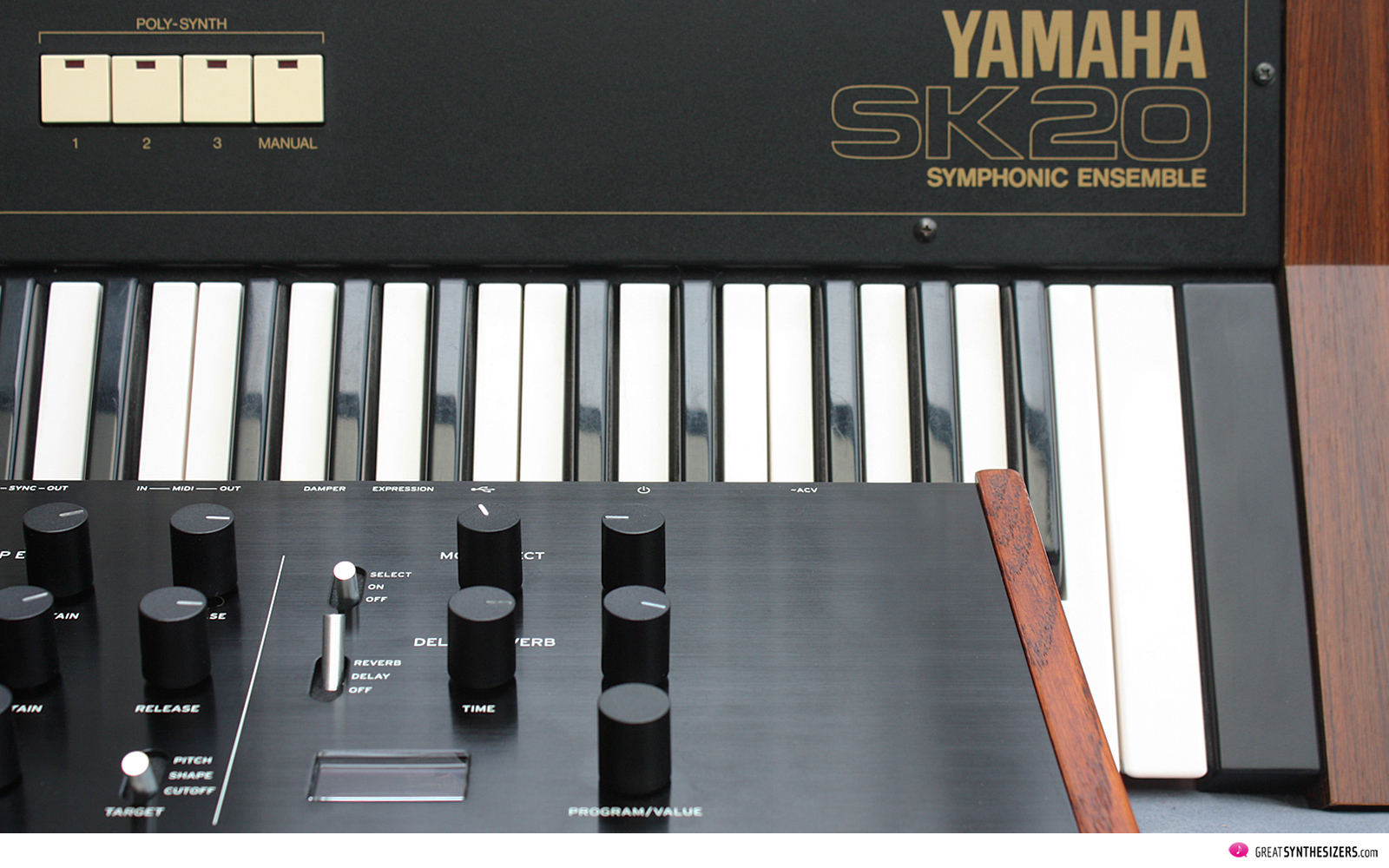 Music files: It’s all Korg prologue-8, with Yamaha’s SK-20 Symphonic Ensemble and the monotribe drum station here and there.
Music files: It’s all Korg prologue-8, with Yamaha’s SK-20 Symphonic Ensemble and the monotribe drum station here and there.
Korg prologue-8 / prologue-16
Polyphonic Analog Synthesizer
8 voices / 16 voices
Prices:
Korg prologue-8: approx. 1,200 Euros/USD
Korg prologue-16: approx. 1,700 Euros/USD
(01/2023)
Website Manufacturer:
www.korg.com
Open / Download:
Korg Prologue-8 photo (2000 x 1200 px)
Korg Prologue-16 photo (2000 x 1200 px)
Youtube: (thanks to Bert for contributing this link)


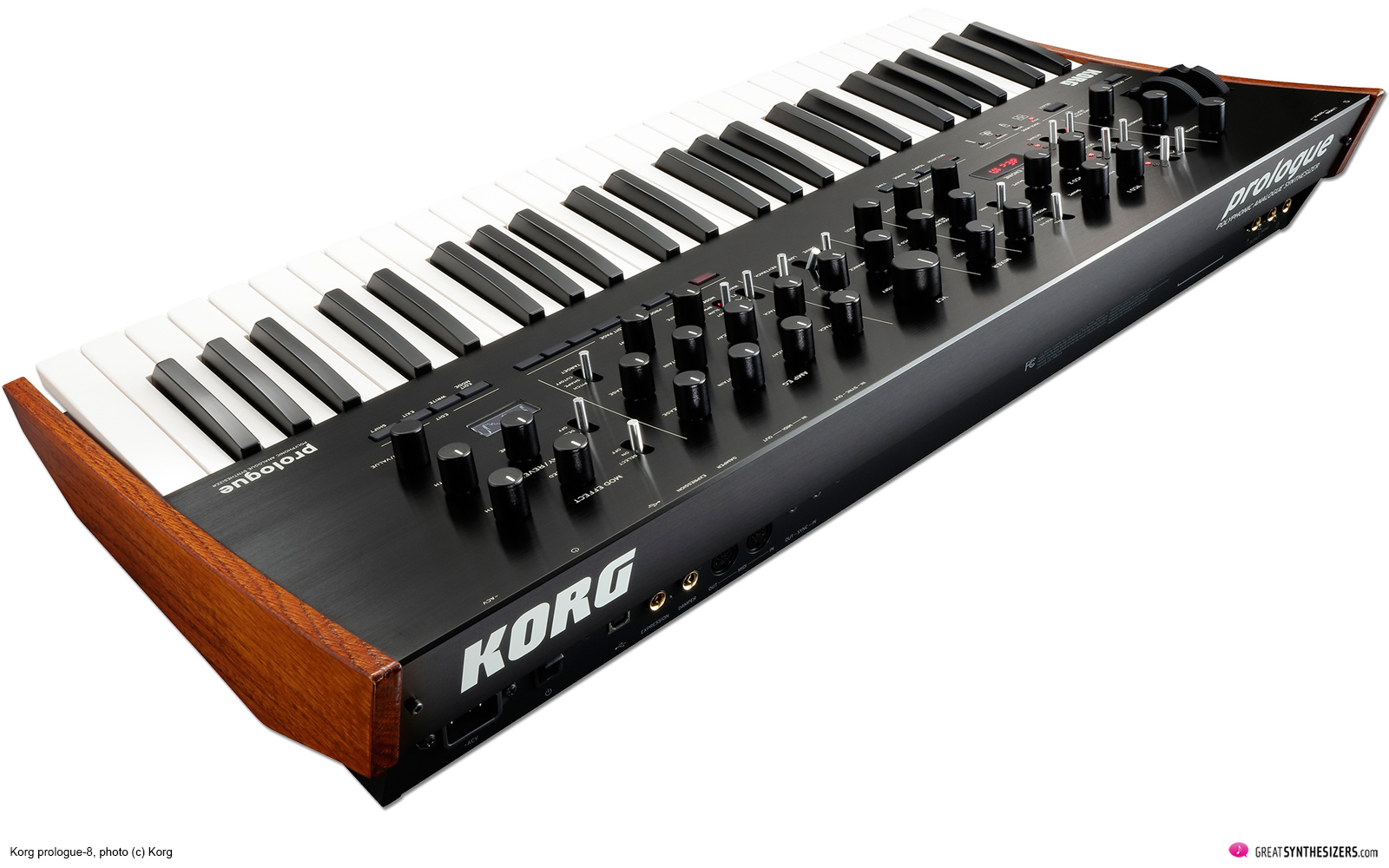
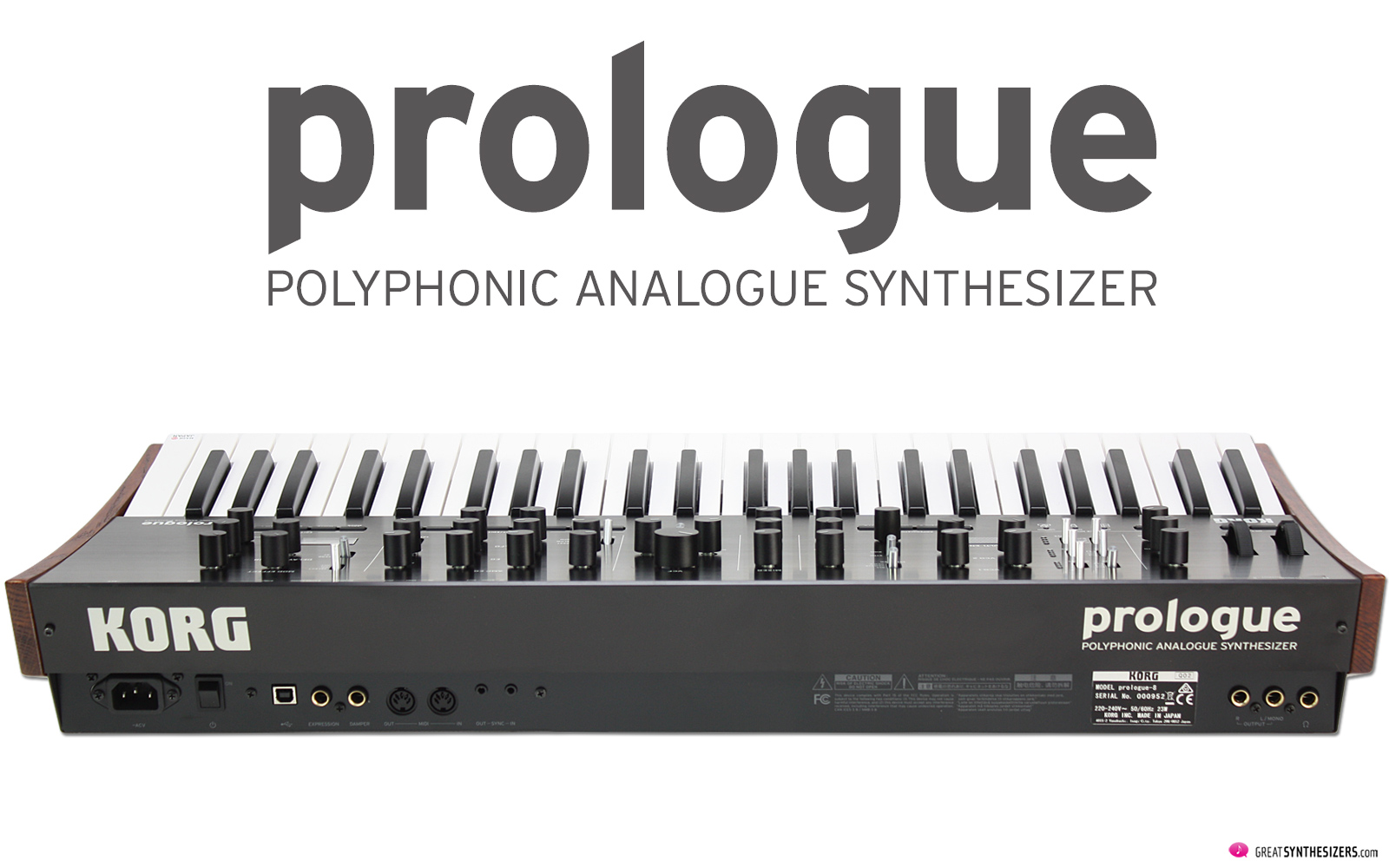
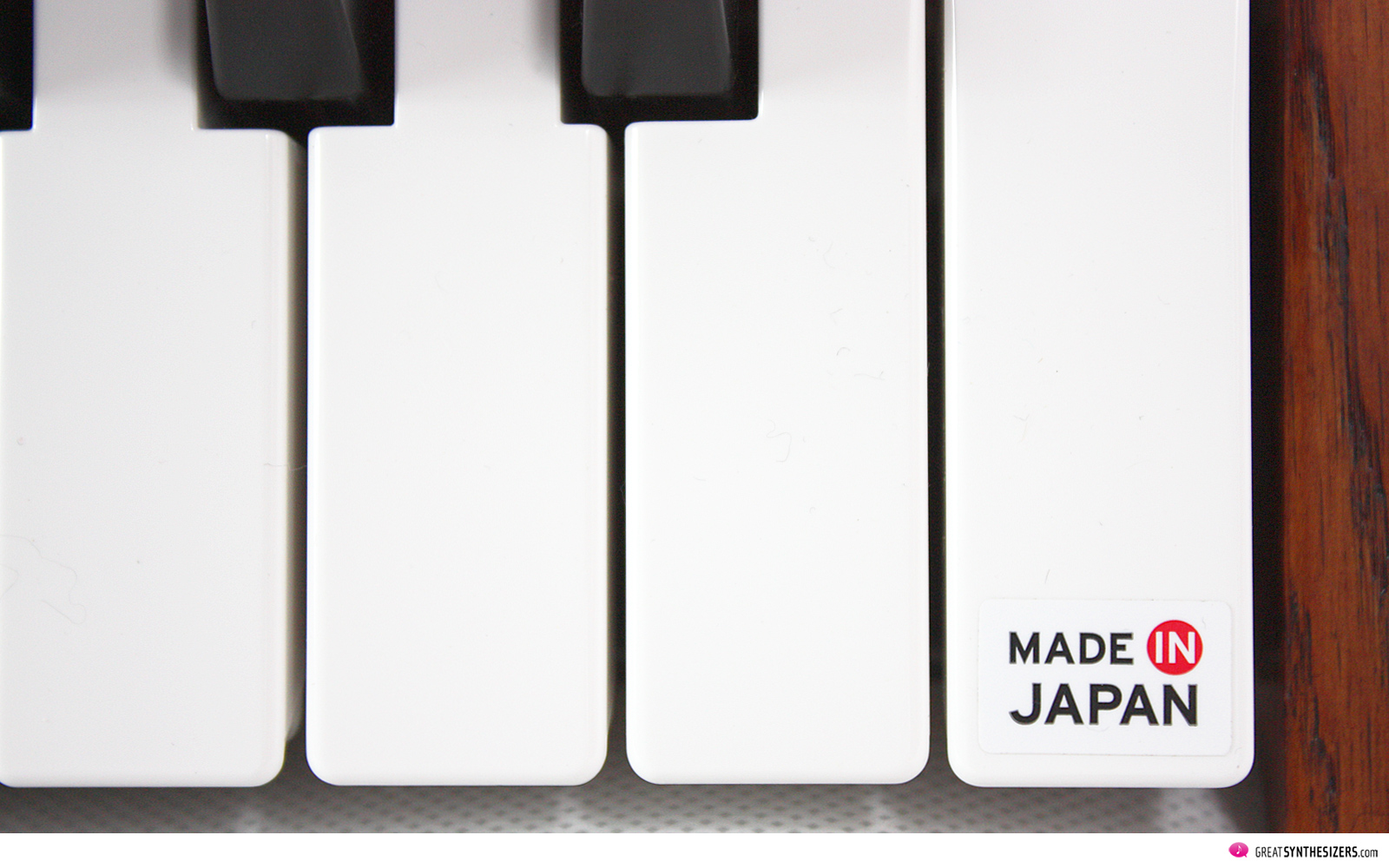

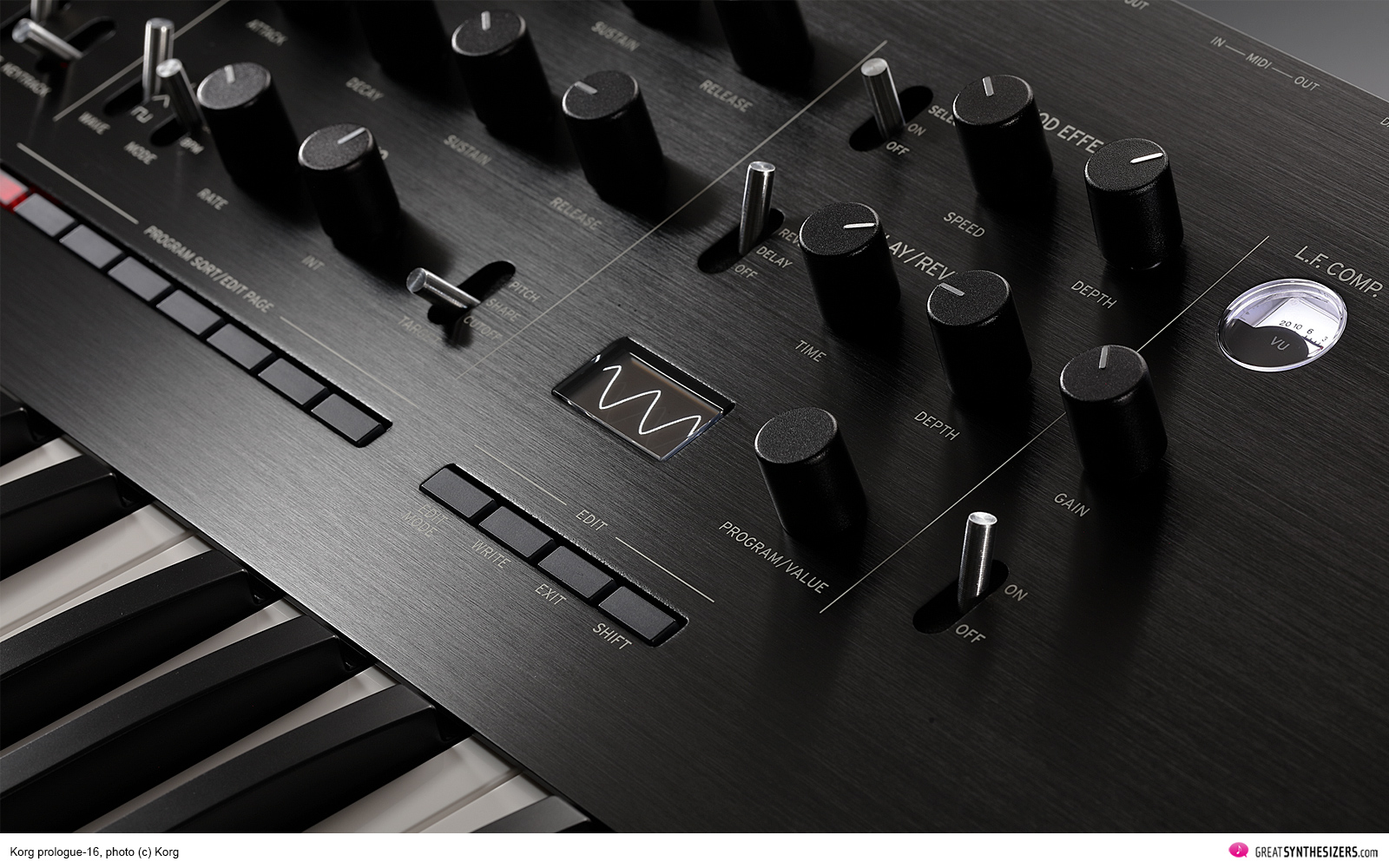

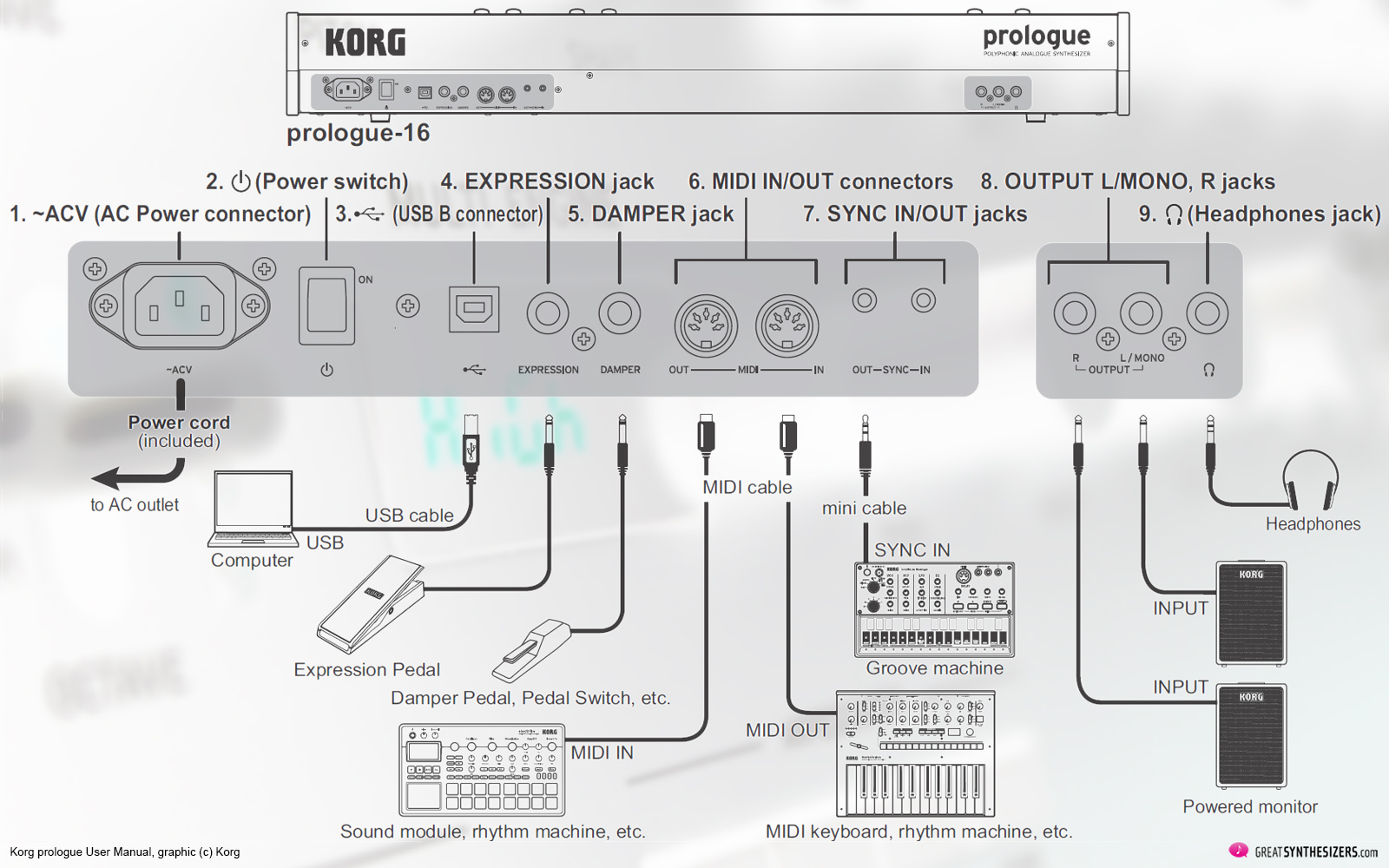
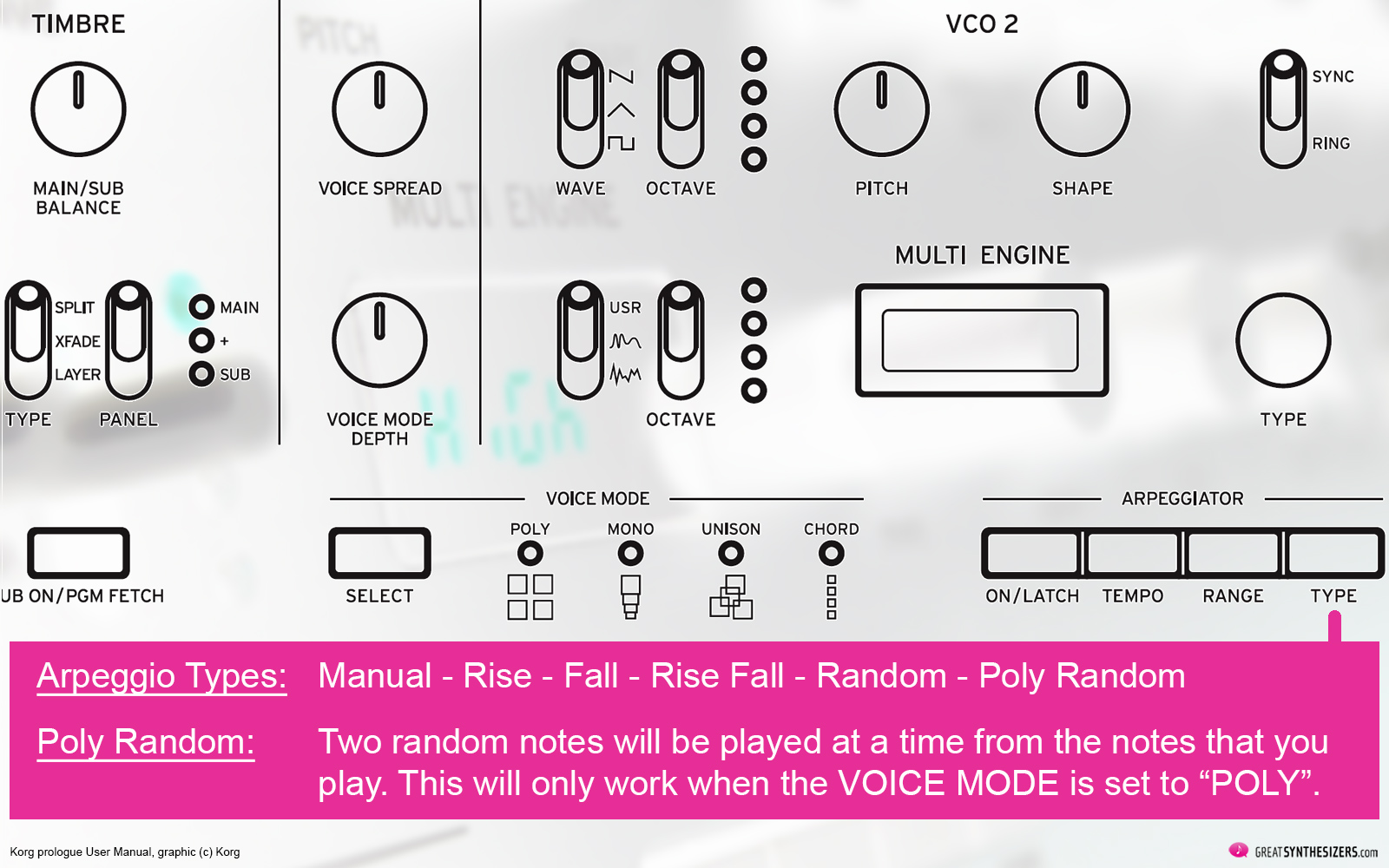


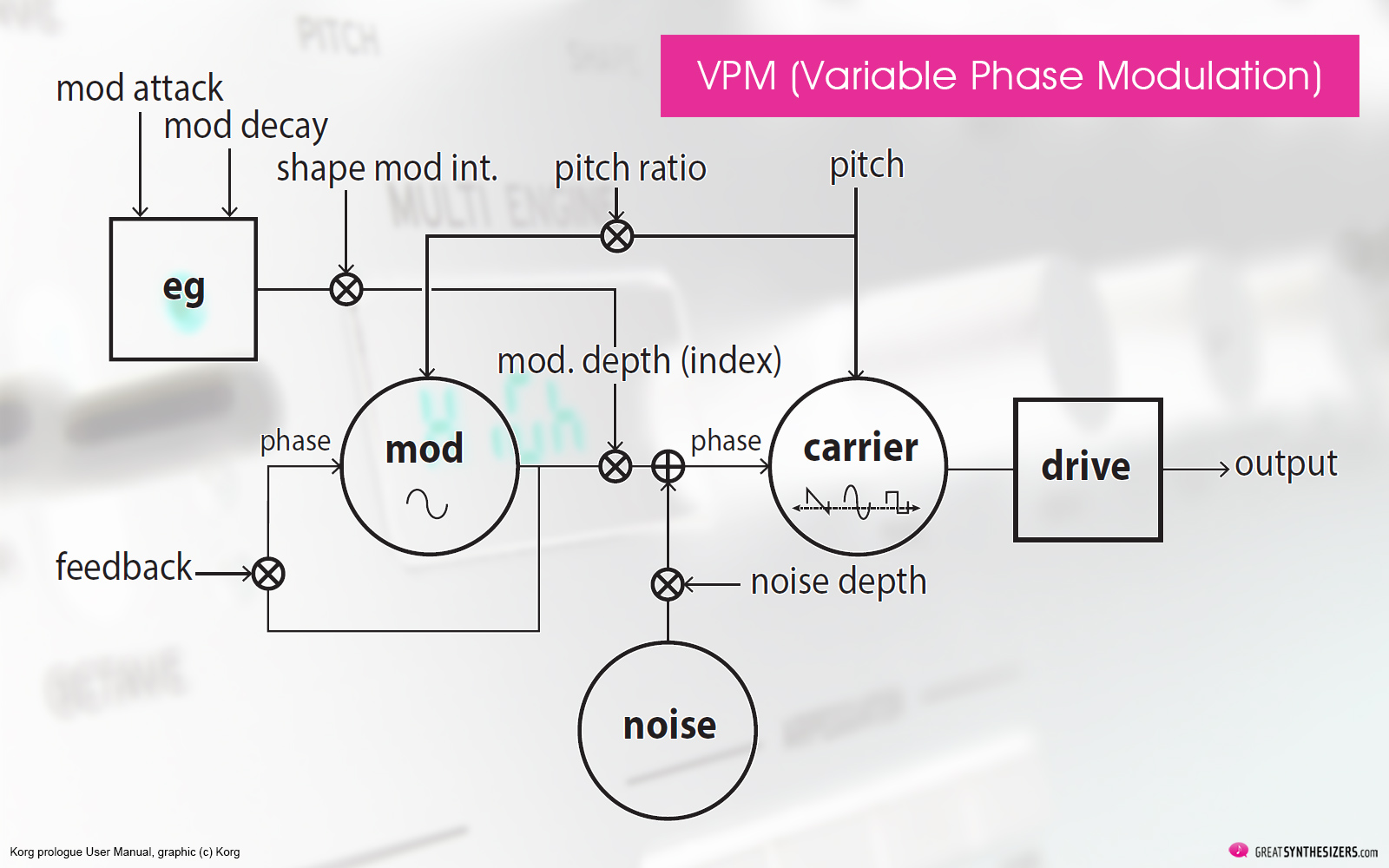

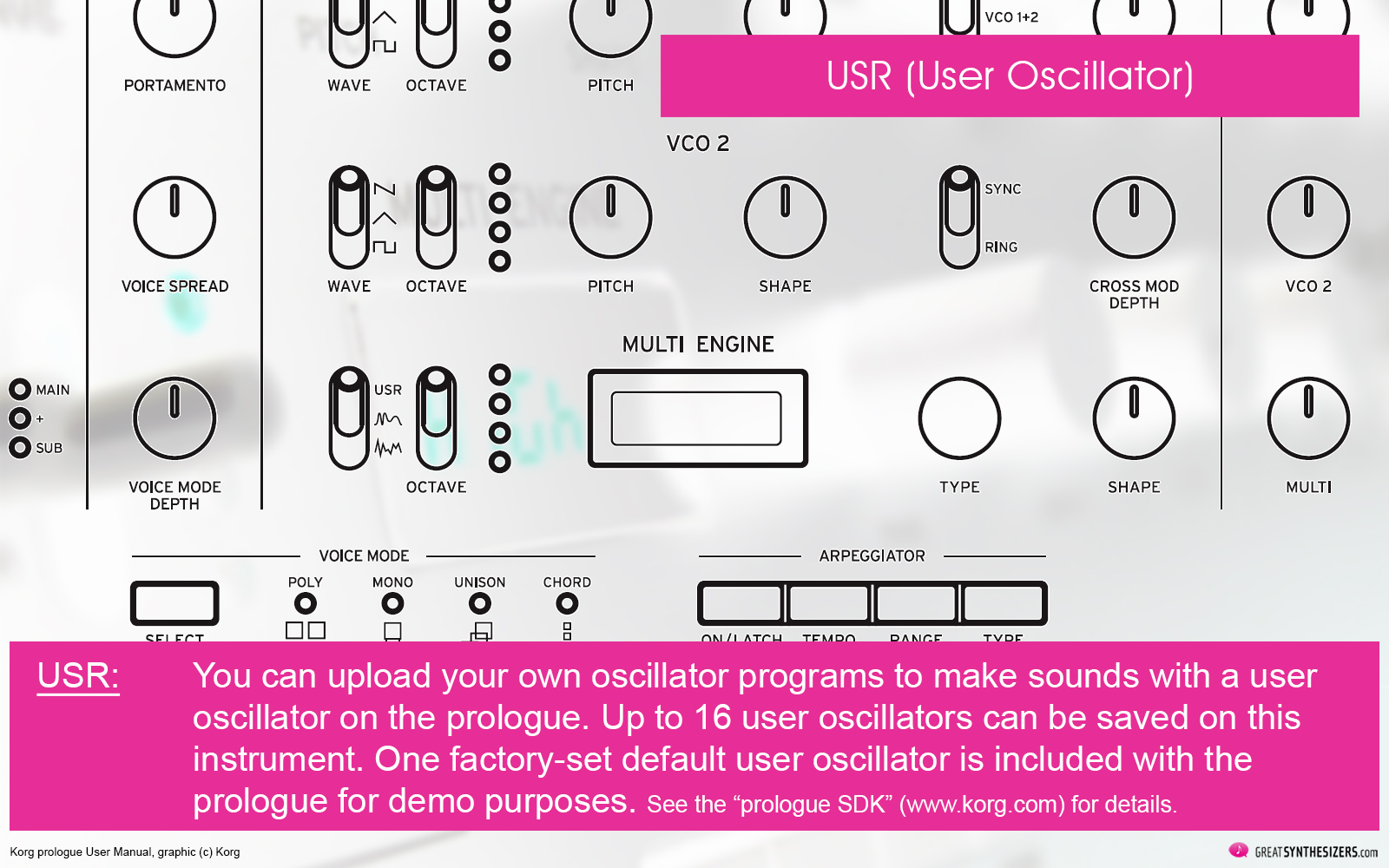

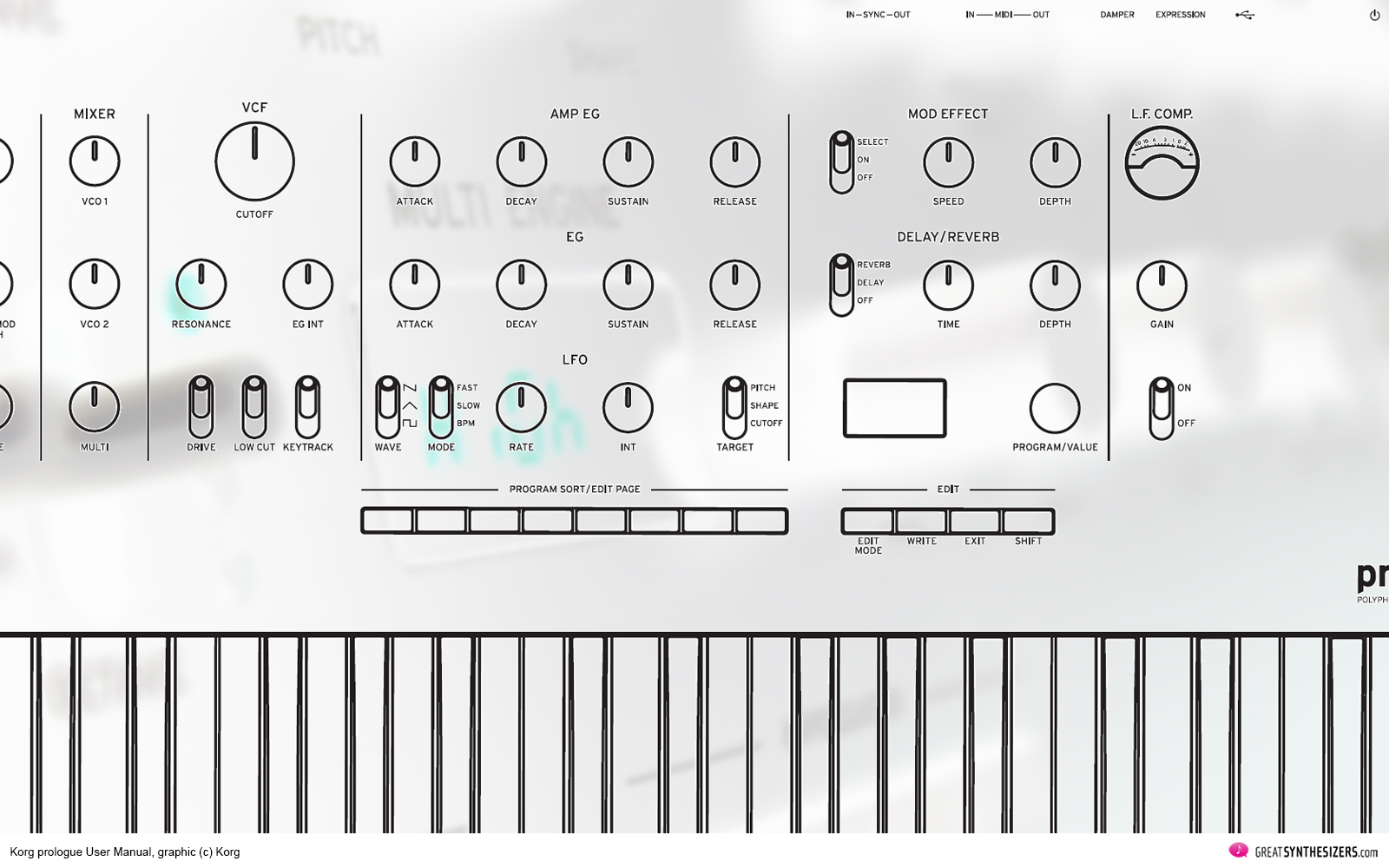

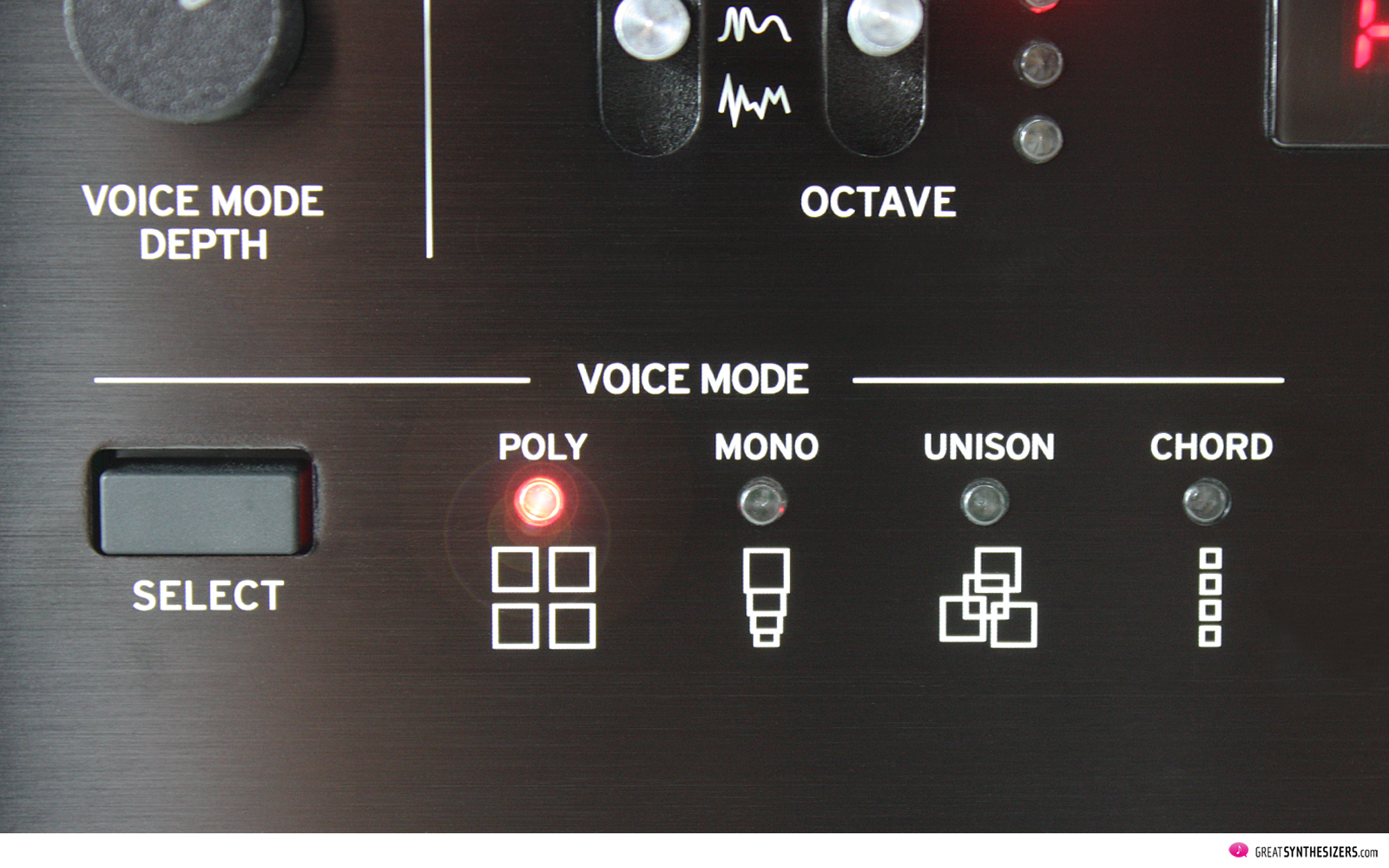


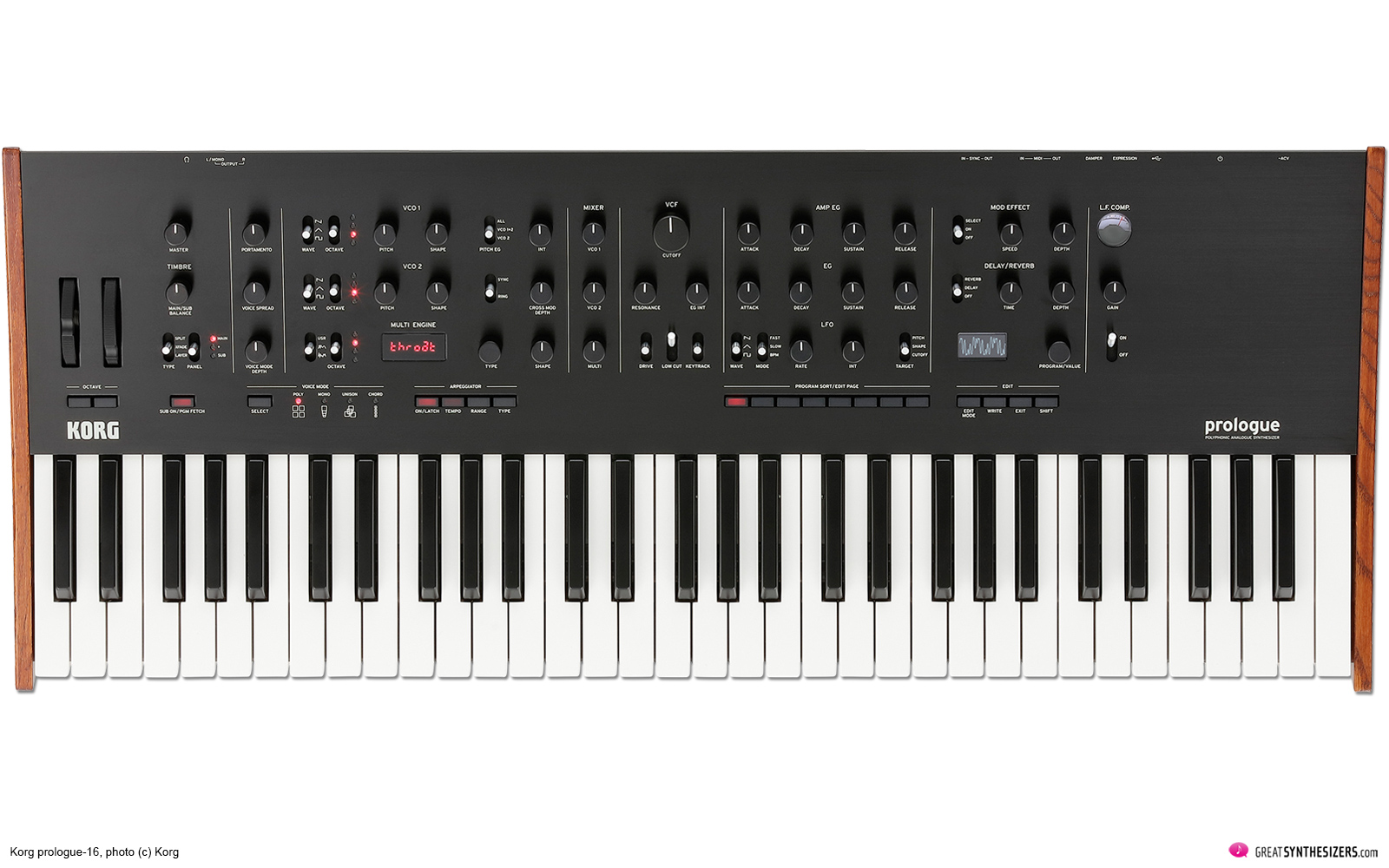
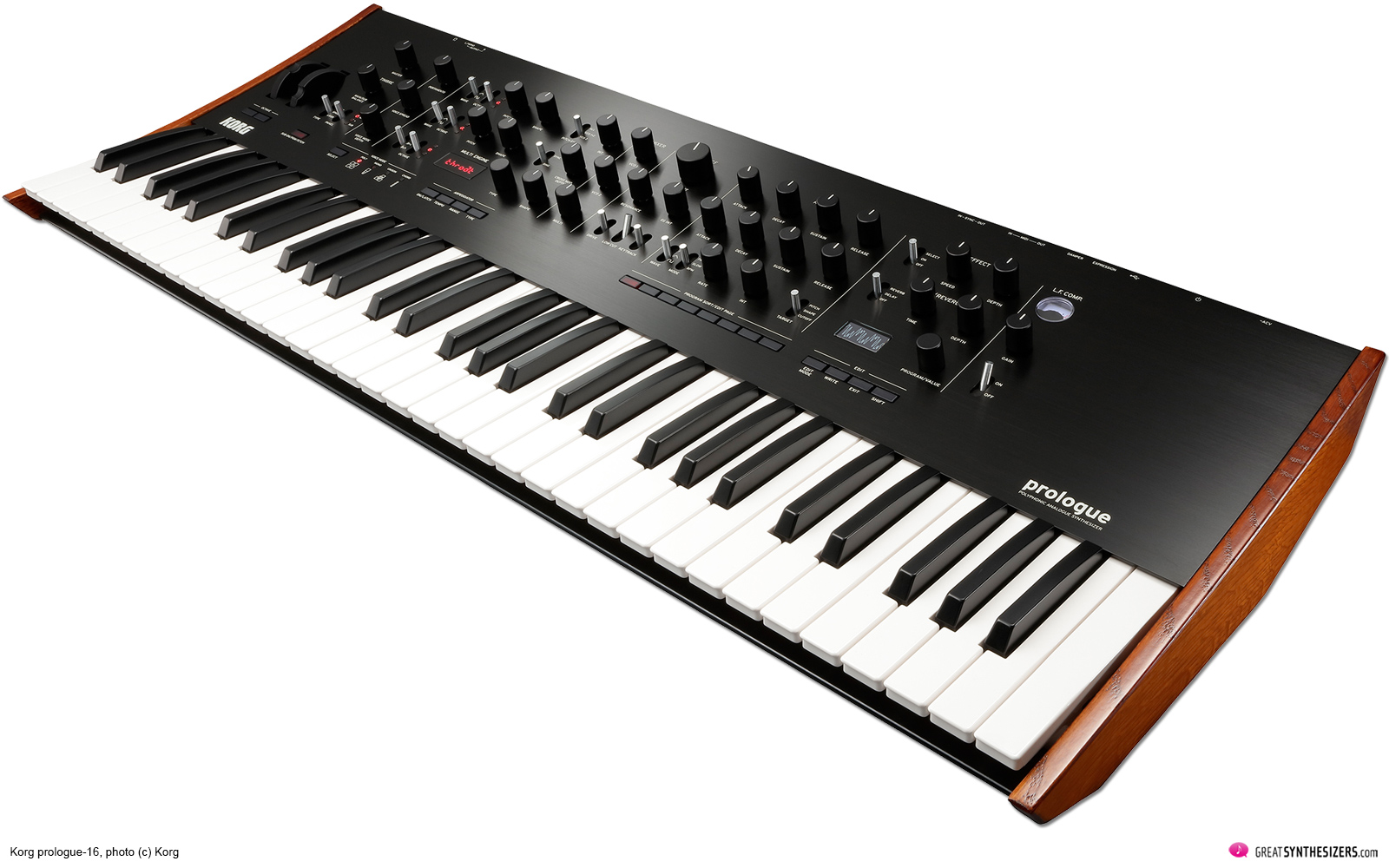
Hi Theo,
The VPM oscillator is a declination of the MOD7 oscillator found in the Kronos/Oasys. Not exactly the same (waveshapers are not involved), but this is essentially a VPM oscillator, with only one carrier and one modulator, and no algorithm/patching features.
I really like what I hear. This is not intended to be another vintage emulation, but a recreation of what 21th century analog sound should be. I found the same philosophy in the Schmidt eight voice synthesizer.
… thanks for the note! I have to study the VPM philosophy a bit, it’s kind of new to me. And you’re absolutely right – the prologue is not just another vintage emulation, but a modern analog synth with a sound of its own … Big compliments to KORG for developing something “new” …
Good information. Thanks. BTW, “irregardless” is a Yogi Berra-ism.
Hello, thank’s for all your great work !
Do you prefer the prologue, or the REV2 by DSI ??
… pesonally, I’d go for the Korg prologue 16. Simply because it offers so many tone colors “beyond” the classic analog sound architecture. But if’s just a high-quality modern analog poly-synthesizer you’re looking for, then the DSI Rev 2 is surely a good choice.
I’ve had both, I really did NOT like the Rev 2 beyond it’s modulation ability. Sure it has mod power but the sound just isn’t there for me. You’ll do a handful of sounds, sequences, morphing textures, layers… then discover how weak the majority of the synth sounds. It’s extremely cold (EXTREMELY), it’s very rigid and you’ll waste 2 LFOS right out the gate on ever patch just trying to breath some movement into the small sounding DCOs that VCO synths don’t need (for contrast I’ve also Owned Prophet 6 and currently own OB-6 *AND* Korg Prologue).
The Prologue is a much much better synthesizer and instrument. It looks beautiful, it’s a work of art and the design, limitations an all, seem part of a balanced master stroke of Japanese-thinking that is missing in the Rev 2 (which is basically ‘throw spec in a box and don’t care about nuance or tone’).
Honestly I couldn’t sell my Rev 2 on fast enough, it barely made it into songs except for some sci-fi style sequences that proved useful (but the Prophet 6, OB-6… JD-XA and Prologue all did it better… more vibe, more character, more inspiring).
The Prologue is very under-rated, which I love btw, unlike the Prophet 6 which to me is over-rated having owned one. It’s got a very tight/strict and limited tone. Sure it can do plenty but like the Rev 2 it didn’t sound the best doing much of it. (The OB-6 is MUCH better than the Prophet 6 and probably the most lively/characterful of the modern synths – it’s much more vintage sounding and analog sounding than the Prophet 6 and Rev 2). The Prologue is somewhere in the middle, to me it’s more musical and inspiring than the Prophets, and sits alongside the OB-6 as its equal but in a different way… OB-6 is about the VCOs and filter, Prologue is about the general tone, flexibility, polyphony and, thankfully, 5 octave keyboard (I have the Prologue 16 and recommend it over the 8). But the Prologue is a wonderful sound machine anyway, and more than enough to make lots of great sound and music, like the OB-6, in ways I didn’t find with Prophet 6 and esp Rev 2.
Short answer:
1st place: OB-6/Prologue 16 (choose your flavour and requirements – 16 voice poly VCO *IS* great esp with layers)
2nd place: Prophet 6
3rd place: JD-XA and others
4th Place: Rev 2
Your choice but not many fans of rev 2 other than for its spec.
Thanks a lot ! :-)
Hello Theo,
First,I wish to apologize for my poor english ( my german is even worse…).
Second, I would like like you didn’t mistake on my words and thoughts: I like your site very much ! Thanks to you, I discovered marvelous instruments I didn’t know in their best expression.
I was about to buy my first synthesizer, and was reading every reviews I could on the web, in every languages possible translated by Google. The reviews you made on Vermona 14′ analog, Baloran the river and the sounds you created on both of them made me dream. I could buy them but not only I am not a musician, but I have not any knowledge in synth… so, it would have been a waste! Same thing for the Novation Summit (still a beautiful review, as on Waldorf’s Quantum).
So, I’ve been reading your review of the Korg Prologue (that I finally bought – waiting for it).
I read a lot of litterature on it (french, english, german or US sites), listened to it on Youtube and finally choosed it (Korg creates a limited serie for France – the Prologue 16-Osc with additionnal osc like Edouard’s Blinds, Plaits by Mutable Instruments an Origami by DirtBoxSynth.
I’ve really nothing to say about your analysis – I wouldn’t dare ! – but, the listening of your demos made think this: only 14 sounds created while you created “quite” the double for The River, the Analog’ 14 or the Quantum.
And, frankly – but “Without the freedom to blame, there is no flattering praise” (Beaumarchais) – your Sounds demos of the Prologue didn’t disserve it. Demonstrations I hearded on Utube gave a better idea of its qualities (be sure i have nothing to sell for Korg, I just regreted you didn’t seem to give the best of yourself on this work.
The ignorant I am believes – what a cuistre ! – that this synth desserves more of your usual creative researches.
Thanks for all the pleasures you give, for your relevant analyses and advices and may god grant long life to greatsynthesizers.com !
(I still listen to Vermona an Baloran’s sounds demo, and will enjoy to read through).
… thanks for your comment! I totally agree, other reviews possibly give a better musical impression than the Korg Prologue review does. I had the Prologue-8 when doing the report, but returned it in favour of other instruments. However, right now I’m thinking of purchasing a Prologue-16 … and with that, there’s a good chance to add more (and better) soundfiles to the demos already listed. It’ll take some time though, but I’ll get back on that …
And I hope you enjoy your Prologue! It’s one of the most exciting modern analog/hybrid poly-synths around!